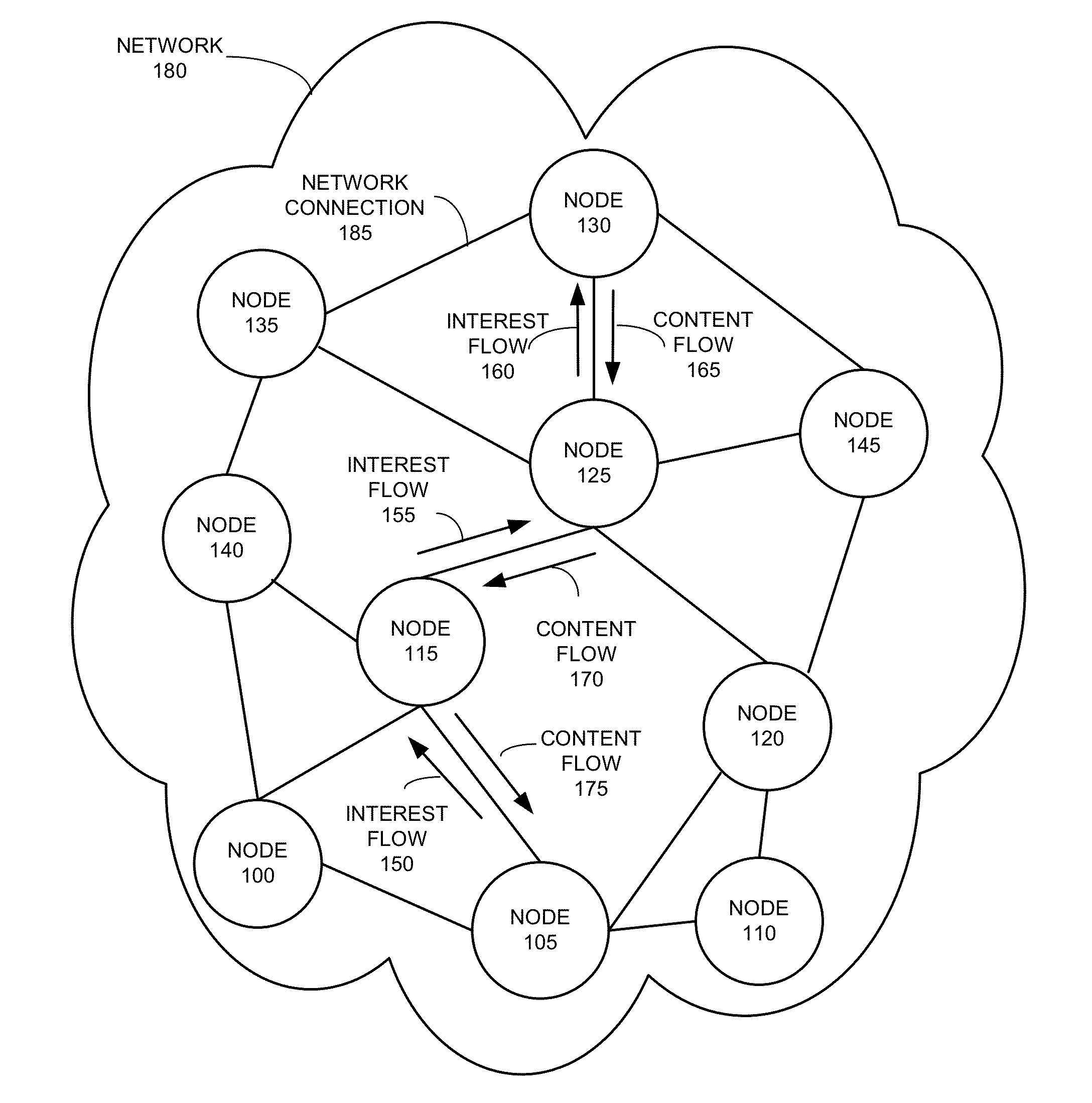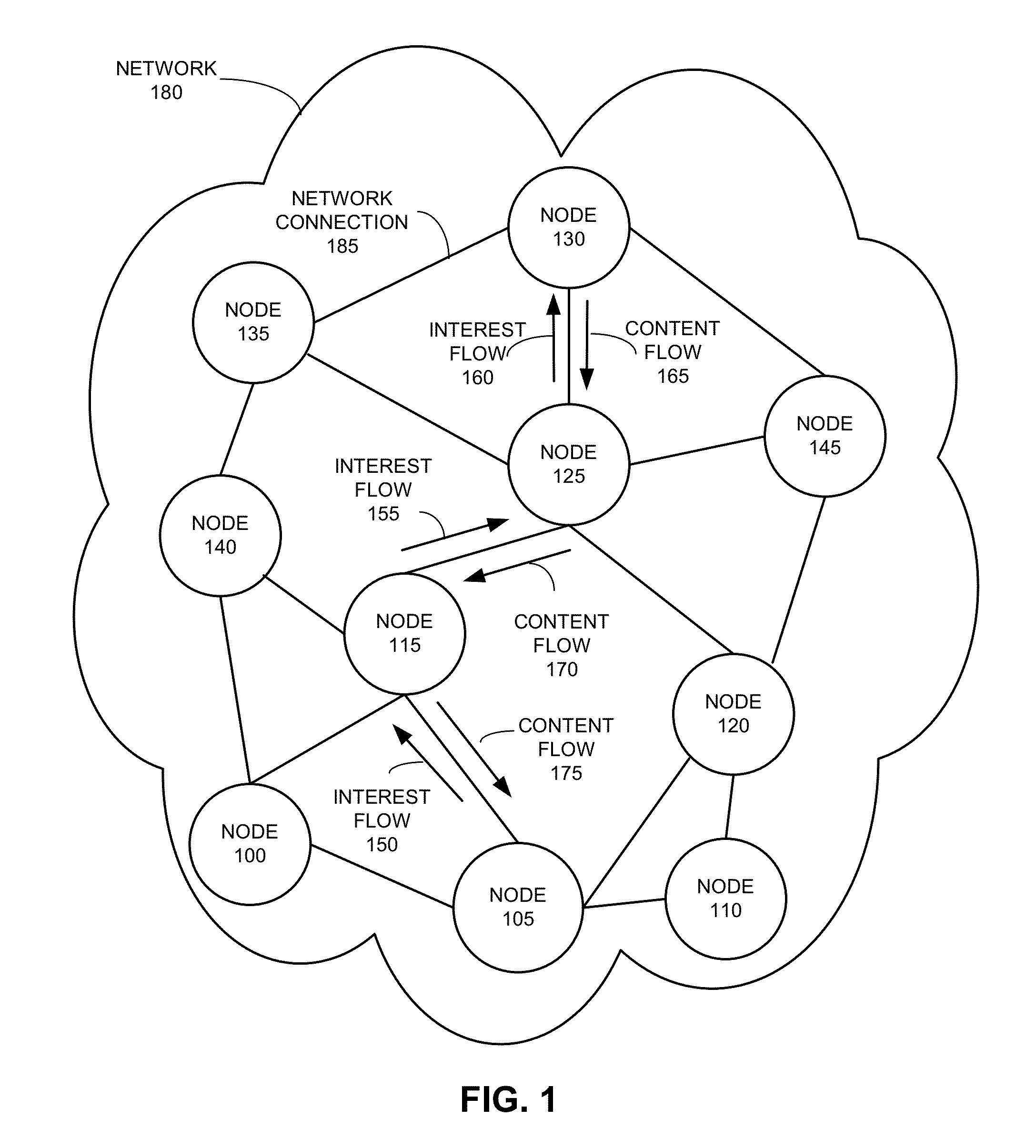System and method for efficient name-based content routing using link-state information in information-centric networks
a content routing and information-centric network technology, applied in the field of information-centric networks, can solve the problems of inability to scale, restrictive addressing schemes becoming progressively more inadequate to meet ever-changing network demands, etc., and achieve the effect of preventing the formation of a loop
- Summary
- Abstract
- Description
- Claims
- Application Information
AI Technical Summary
Benefits of technology
Problems solved by technology
Method used
Image
Examples
Embodiment Construction
Overview
[0025]Embodiments of the present invention provide a system for content routing based on link-state information in an information-centric network (ICN). More specifically, the link-state content routing (LCR) system operates by having routers maintain a number of tables, including a link cost table, a topology table, a routing table, and an anchor table. Information stored in these tables can be updated periodically by routers. The topology table is updated when a router receives link-state advertisements (LSAs) from its neighbors. The routing table can be computed and updated by means of the shortest path first (SPF) algorithm. Compared with conventional link-state based routing, in the LCR system, routers do not flood the network LSAs regarding all replicas of a name prefix. Instead, an LSA regarding a name prefix is set up in such a way that each router reports only one replica (often the nearest) for each name prefix.
Exemplary CCN Architecture
[0026]To demonstrate the ope...
PUM
 Login to View More
Login to View More Abstract
Description
Claims
Application Information
 Login to View More
Login to View More - R&D
- Intellectual Property
- Life Sciences
- Materials
- Tech Scout
- Unparalleled Data Quality
- Higher Quality Content
- 60% Fewer Hallucinations
Browse by: Latest US Patents, China's latest patents, Technical Efficacy Thesaurus, Application Domain, Technology Topic, Popular Technical Reports.
© 2025 PatSnap. All rights reserved.Legal|Privacy policy|Modern Slavery Act Transparency Statement|Sitemap|About US| Contact US: help@patsnap.com



